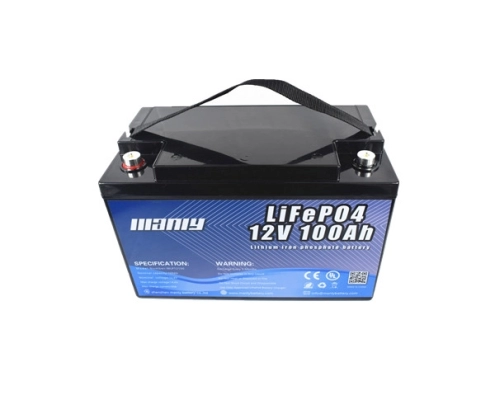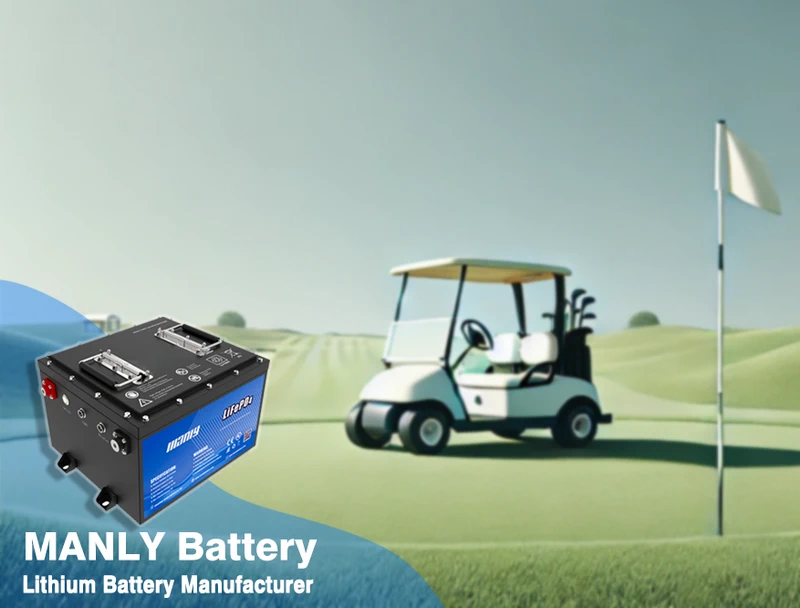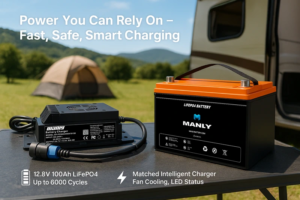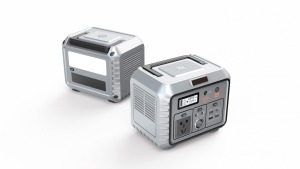Quanto durerà una batteria da 100 Ah?
Sommario
- Quanto durerà una batteria da 100 Ah?
- Comprendere la capacità della batteria
- Tipi di batterie da 100 Ah
- Metodo dettagliato per calcolare la durata della batteria
- Come calcolare l'autonomia della batteria: una guida pratica
- How Long Does 100Ah Battery Last in a Golf Cart
- How Long Will 4 Parallel 12v 100Ah Lithium Batteries Last
- Conclusione
- Ulteriori informazioni sulla batteria
Choosing the right battery and understanding how long it will last are crucial for both daily use and long-term planning. Whether you're powering a home, an RV, or any other device, knowing the battery capacity and how to calculate its run time ensures you have reliable power when you need it. This guide will walk you through the process of calculating the run time of a 100ah battery, explain important concepts like battery ah meaning, and discuss the differences between various types of 100Ah batteries. By the end of this guide, you'll have a clear understanding of how to manage your power needs effectively.


Comprendere la capacità della batteria
Spiegazione del significato della batteria ahBattery capacity tells us how much electric charge a battery can store. It's like a tank holding water. The unit we use to measure this is called amp hours (Ah) or milliamp hours (mAh). If you see a battery labeled with 100ah, it means it can deliver 100 amps for one hour or 10 amps for 10 hours. Think of amp hours as the size of the tank and the current (amps) as the water flowing out. A bigger tank (higher Ah) means more water (electricity) can flow for a longer time.Cosa significa ah su una batteria? Chiarire il significato della batteria ahSo, what does ah mean on a battery? Ah stands for amp hours, a way to measure battery capacity. It's crucial for understanding how long a battery will last under a specific load. For example, if you have a 100Ah battery, it means the battery can deliver 100 amps of current for one hour before it's empty. If your device only needs 10 amps, the same battery would last for 10 hours (100Ah / 10A = 10h). This is why ah battery meaning is essential when choosing the right battery for your needs.Let's break it down with an example. Imagine you have a 7Ah battery. If you use it with a device that draws 0.35 amps, you can calculate the runtime as follows:7Ah÷0,35A=20 oreThis shows how long the battery will last with that specific load. Knowing what does ah mean on a battery helps you plan and manage your power needs effectively.Importance of amp hours explained in understanding battery lifeUnderstanding amp hours is key to predicting how long your battery will last. When we talk about amp hours explained, we mean how this unit helps us figure out the battery's lifespan under different loads. This knowledge is critical for anyone using batteries in their daily life, from homeowners to RV enthusiasts.For instance, if you're running a 12-volt device with a 12 volt lithium battery 100ah, you can use an amp hour calculator to estimate how long your battery will last. Suppose your device uses 5 amps. Here's the calculation:100UNh÷5UN=20oreThis means the 100ah battery will last for 20 hours before needing a recharge. This simple math can make a big difference in planning your power usage.Knowing what is ah in battery and how to use it can save you from unexpected power shortages. It's also helpful for comparing batteries. A higher Ah rating generally means longer battery life, but it also depends on the current draw of your devices.When you understand amp hours explained, you can make better choices about which battery to buy. You can match the battery's capacity with your power needs, ensuring you have enough power for your devices. For example, a 100 amp lithium battery is suitable for high-demand devices, while a smaller battery might be enough for low-power needs.In summary, understanding battery capacity means knowing the battery ah meaning and how amp hours work. This knowledge helps you choose the right battery and use it efficiently. Whether you're powering a home, an RV, or any other device, knowing your battery's capacity and how to calculate its run time is essential for reliable power management.
Tipi di batterie da 100 Ah
When it comes to 100Ah batteries, there are three main types: Batteria agli ioni di litio da 100 Ah, Batteria LiFePO4 da 100 Ah, E Batteria al piombo da 100 Ah. Ognuna di queste batterie ha caratteristiche uniche e vengono utilizzate in diverse applicazioni in base ai loro punti di forza e di debolezza. Comprendere queste differenze è fondamentale per selezionare la batteria giusta per le tue esigenze.1. Overview of Different Types
Batteria agli ioni di litio da 100 Ah: Le batterie agli ioni di litio sono note per la loro elevata densità di energia e la lunga durata. Sono comunemente utilizzati nell'elettronica portatile, nei veicoli elettrici e nei sistemi di energia rinnovabile. Queste batterie sono leggere e possono immagazzinare una grande quantità di energia in un piccolo spazio. Una tipica batteria agli ioni di litio da 100 Ah può fornire una fonte di alimentazione affidabile per varie applicazioni, rendendola una scelta popolare.100 AhBatteria LiFePO4:Le batterie LiFePO4, o litio ferro fosfato, sono un tipo di batteria agli ioni di litio che offre maggiore sicurezza e una maggiore durata. Queste batterie sono particolarmente note per la loro stabilità e resistenza al surriscaldamento. Sono spesso utilizzati in applicazioni in cui la sicurezza è una priorità assoluta, come nei veicoli elettrici, nei sistemi di energia solare e negli alimentatori di riserva. Una batteria LiFePO4 100Ah può sopportare più cicli di carica e scarica rispetto ad altre batterie agli ioni di litio.Batteria al piombo da 100 Ah: Le batterie al piombo sono uno dei più antichi tipi di batterie ricaricabili. Sono più pesanti e ingombranti rispetto alle batterie agli ioni di litio, ma sono anche più convenienti. Le batterie al piombo sono comunemente utilizzate nelle applicazioni automobilistiche, nei gruppi di continuità (UPS) e nei sistemi di alimentazione di backup. Sebbene abbiano un ciclo di vita più breve e una densità di energia inferiore, sono affidabili ed economici per molti usi.2. Comparison Between Them and Their Specific Applications
Densità energetica e peso:- Batteria agli ioni di litio da 100 Ah: Queste batterie hanno un'elevata densità di energia, il che significa che possono immagazzinare più energia per unità di peso. Ciò li rende ideali per dispositivi portatili e veicoli elettrici in cui il peso è un fattore critico.
- Batteria LiFePO4 da 100 Ah: Anche le batterie LiFePO4 hanno un'elevata densità di energia ma sono leggermente più pesanti delle batterie agli ioni di litio standard. Tuttavia, la loro maggiore sicurezza e il lungo ciclo di vita li rendono adatti per applicazioni fisse come lo stoccaggio dell'energia solare e l'energia di backup.
- Batteria al piombo da 100 Ah: Le batterie al piombo hanno una densità di energia inferiore, il che le rende più pesanti e ingombranti. Non sono adatti per applicazioni in cui il peso è un problema, ma la loro convenienza li rende una buona scelta per usi stazionari e meno sensibili al peso.
- Batteria agli ioni di litio da 100 Ah: In genere, queste batterie possono resistere da 500 a 1000 cicli di ricarica. Sono particolarmente adatti per applicazioni che richiedono cicli frequenti, come veicoli elettrici ed elettronica portatile.
- Batteria LiFePO4 da 100 Ah: Le batterie LiFePO4 eccellono nella durata del ciclo, con un intervallo da 1.000 a 2.000 cicli. Ciò li rende perfetti per l’uso a lungo termine nei sistemi di energia rinnovabile e nei veicoli elettrici.
- Batteria al piombo da 100 Ah: Queste batterie hanno un ciclo di vita più breve, solitamente da 300 a 500 cicli. Sono più adatti per le applicazioni in cui la batteria non viene sottoposta a cicli frequenti, come i sistemi di alimentazione di backup.
- Batteria agli ioni di litio da 100 Ah: Sebbene generalmente sicure, queste batterie possono comportare rischi se danneggiate o maneggiate in modo improprio, inclusi potenziali rischi di incendio.
- Batteria LiFePO4 da 100 Ah: Queste batterie sono tra le batterie agli ioni di litio più sicure, con un rischio molto più basso di surriscaldamento e incendio. Sono ideali per le applicazioni in cui la sicurezza è fondamentale.
- Batteria al piombo da 100 Ah: Le batterie al piombo sono relativamente sicure ma possono produrre gas idrogeno durante la carica, il che richiede un'adeguata ventilazione per evitare esplosioni.
- Batteria agli ioni di litio da 100 Ah: Queste batterie sono più costose a causa della loro tecnologia avanzata e dell'elevata densità di energia. Il costo iniziale più elevato è spesso giustificato dalle prestazioni e dalla longevità.
- Batteria LiFePO4 da 100 Ah: Anche le batterie LiFePO4 sono costose, ma la loro lunga durata e le caratteristiche di sicurezza le rendono un investimento utile per molti utenti.
- Batteria al piombo da 100 Ah: Le batterie al piombo sono l'opzione più conveniente. Il loro costo inferiore li rende accessibili per un’ampia gamma di applicazioni, nonostante le prestazioni inferiori.

Metodo dettagliato per calcolare la durata della batteria
Understanding how long a battery will last is important for planning and reliability. The run time of a battery is determined by several factors, including its capacity, the load connected to it, and the condition of the battery. Here, we’ll break down the process to calculate the run time for a 100ah battery.First, let's understand battery capacity. Battery capacity is measured in amp hours (Ah). A 100ah battery means it can provide 100 amps for one hour, or 10 amps for 10 hours. Per calcolare quanto durerà una batteria, si utilizza la formula:Autonomia della batteria (ore)=Capacità della batteria (Ah)Carico (Amp)Autonomia della batteria (ore)=Carico (ampere)Capacità della batteria (Ah)Ad esempio, se hai una batteria da 100 Ah e colleghi un carico da 10 A, la batteria durerebbe:100UNh /10UN=10oreQuesta semplice formula ti aiuta a stimare il tempo di esecuzione con carichi diversi.1. Using an calcolatore ampere-oraper determinare il tempo di esecuzione
An amp hour calculator is a useful tool that simplifies these calculations. By inputting the battery's capacity and the load, the calculator gives you an immediate estimate of how long the battery will last. This is especially helpful for those who might find manual calculations challenging.Ad esempio, se hai una batteria al litio da 100 Ah e la colleghi a un dispositivo che utilizza 5 A, la calcolatrice mostrerà:100UNh/5A=20oreCiò significa che la batteria da 100 Ah durerà 20 ore prima di dover essere ricaricata.Calcoli di esempio per dispositivi comuni
Let's go through some common examples to see how this works in real life.Esempio 1: utilizzo di una TV- Supponiamo che la TV utilizzi 2 amp.
- Con una batteria al litio da 100 Ah:
- Un laptop potrebbe utilizzare circa 5 amp.
- Con una batteria al litio da 100 Ah:
- Le luci del camper potrebbero utilizzare 1 amp.
- Con una batteria al litio da 100 Ah:
2. Factors Affecting Battery Life
While these calculations give you a basic idea, several factors can affect the actual run time of a 100ah battery:- Condizioni della batteria: Le batterie nuove funzionano meglio di quelle vecchie. Nel tempo, la capacità di una batteria diminuisce. Una batteria al litio da 100 Ah in buone condizioni potrebbe darti quasi 100 Ah, ma una più vecchia potrebbe non darti.
- Tasso di scarico: Le batterie hanno velocità di scarica diverse. Ad esempio, una batteria LiFePO4 100Ah può in genere scaricarsi a velocità più elevate rispetto a una batteria al piombo senza perdere efficienza. Ciò significa che una batteria LiFePO4 100Ah potrebbe fornire un tempo di funzionamento più costante su carichi diversi.
- Temperatura: Extreme temperatures can affect battery performance. At very low temperatures, the battery's efficiency drops, reducing the run time. For example, a 100ah lithium battery might only last half as long at -10°C compared to room temperature.
- Autoscarica: Con il passare del tempo le batterie perdono carica anche quando non vengono utilizzate. Le batterie al litio hanno un basso tasso di autoscarica, spesso intorno al 2% al mese. Al contrario, le batterie al piombo possono perdere fino al 4% a settimana. Ciò influisce sul tempo in cui la batteria può mantenere la carica quando viene conservata.
- Caratteristiche del carico: Alcuni dispositivi assorbono più energia in modo intermittente. Un dispositivo con una corrente di avviamento più elevata potrebbe ridurre la durata della batteria più velocemente di un dispositivo con un carico costante.
Come calcolare l'autonomia della batteria: una guida pratica
When you need to figure out how long a 100Ah battery will last, there are several steps and factors to consider. This guide will walk you through the process using simple terms and examples.(For a precise and efficient calculation of battery runtime, the Lead Acid, Lithium & LiFePO4 Battery Runtime Calculator offers accurate and user-friendly results.)1. Understanding Battery Capacity in Watt-Hours
The first thing to know is how to convert the battery capacity from amp-hours (Ah) to watt-hours (Wh). Watt-hours are a better measure because they show the energy consumption directly.To convert amp-hours to watt-hours, multiply the amp-hours by the battery voltage. Most deep-cycle batteries work at 12 volts. For a 100Ah battery, the calculation is:Wh=Ah×TensioneCosì,Wh=100×12=1200 wattoraCiò significa che la batteria può fornire 1200 watt per un'ora.2. Considering Depth of Discharge (DoD)
Next, we need to consider the Depth of Discharge (DoD), which is the percentage of the battery that can be safely used. For lead-acid batteries, the DoD is usually 50%. For LiFePO4 batteries, it's typically 100%.Per una batteria al piombo:Capacità disponibile=Wh×DoD=1200×0,50=600 wattora=1200×0.50=600wattoraPer una batteria LiFePO4:Capacità disponibile=1200×1,00=1200 wattora3. Accounting for Inverter Efficiency
Batteries provide DC power, but most devices use AC power, so an inverter is used to convert DC to AC. Inverters are not 100% efficient; they usually have an efficiency rating (ER) of about 95%.Per una batteria al piombo:Capacità netta=Capacità disponibile×ER=600×0,95=570 wattora=600×0.95=570wattoraPer una batteria LiFePO4:Capacità netta=1200×0,95=1140 wattora4. Calculating Run Time
Now that we have the net capacity, we can calculate the run time. You need to know the total power consumption of the devices you’re using, measured in watts.For example, if you're using a 50W lamp and a 50W speaker, the total load is:Carico totale=50W+50W=100WIl tempo di funzionamento è la capacità netta divisa per il carico totale:Per una batteria al piombo:Tempo di esecuzione=Carico totaleCapacità netta=570Wh/100 W=5.7orePer una batteria LiFePO4:Tempo di esecuzione=1140Wh /100W=11.4ore5. Practical Example
Let’s put this into a real-life scenario. Imagine you have a camping trip and you bring a 100Ah LiFePO4 battery, a 50W lamp, and a 50W portable speaker.- Convertire ampere-ora in wattora:100UNh×12V=1200Wh
- Considera la DoD per LiFePO4:1200Wh×100
- Considerare l'efficienza dell'inverter:1200Wh×95
- Calcola il carico totale:50W+50W=100W
- Determinare il tempo di esecuzione:1140Wh/100W=11.4ore
How Long Does 100Ah Battery Last in a Golf Cart
Understanding how long a 100Ah battery can last in a golf cart involves several factors, including battery type, usage patterns, and environmental conditions. A standard Lifepo4 golf cart battery with a capacity of 100Ah typically offers a balance between performance and longevity, making it a popular choice among golf cart owners. However, determining the actual runtime of a 100Ah golf cart battery requires a closer look at its specifications and how it is used in different scenarios.
1. What is the Life Expectancy of Golf Cart Batteries?
The golf cart battery life expectancy is influenced by multiple variables, such as battery type, usage frequency, and maintenance practices. Generally, the life expectancy of golf cart batteries ranges from 3 to 5 years for lead-acid batteries and can extend up to 8-10 years for lithium options like Lifepo4 golf cart batteries. Proper care and regular maintenance can help maximize golf cart battery lifespan, ensuring that your investment lasts as long as possible.2. Key Factors Influencing Golf Cart Battery Life
The golf cart battery lifespan is influenced by a combination of factors such as battery capacity, age, type, and maintenance practices. For example, batteries that are frequently deeply discharged, used in extreme temperatures, or stored improperly will experience a shorter lifespan. Ensuring that the batteries are used under optimal conditions can significantly prolong their longevity.- Battery Capacity: The capacity, measured in amp-hours (Ah), indicates how much energy the battery can store. A 100Ah battery can theoretically supply 100 amps for one hour or 10 amps for 10 hours. However, real-world factors such as driving conditions and terrain can alter this.
- Battery Age: Over time, batteries naturally degrade. This process is accelerated by deep discharges, extreme temperatures, and poor charging habits. An aging battery will have a reduced ability to hold a charge, resulting in shorter runtime.
- Tipo di batteria: Lithium batteries, such as Lifepo4 golf cart batteries, generally have a longer lifespan compared to traditional lead-acid batteries. They also have lower maintenance needs and better energy efficiency.
- Usage Patterns: Frequent and high-current discharges, as well as running the battery to extremely low levels, can shorten its lifespan. Golf carts used on hilly terrain or for towing purposes will put more strain on the battery.
- Condizioni ambientali: High temperatures can accelerate chemical reactions inside the battery, causing faster wear. Cold temperatures can reduce the battery's capacity, impacting performance and lifespan.
- Maintenance Practices: Regularly checking battery connections, cleaning terminals, and maintaining proper electrolyte levels (for lead-acid batteries) can prevent premature battery failure.
3. How Long Does a 100Ah Battery Last in a Golf Cart?
A 100Ah golf cart battery will typically last between 4 to 8 hours on a single charge, depending on driving conditions and usage. If the golf cart operates on flat terrain with a moderate load, you can expect the battery to last closer to 8 hours. On hilly terrain or with a heavier load, the battery’s runtime may be reduced to around 4 hours.For instance, if a golf cart uses an average of 10 amps per hour, a fully charged 100Ah Lifepo4 golf cart battery would provide approximately 10 hours of use (100Ah ÷ 10A = 10 hours). However, it’s important to note that real-world usage varies due to factors such as speed, terrain, and the cart's total weight.4. When to Replace Golf Cart Batteries?
You should replace golf cart batteries when their performance noticeably declines, such as when the cart’s runtime decreases significantly or when the battery struggles to hold a charge. Physical signs such as swelling, leaking, or cracked casings are also strong indicators that the batteries are near the end of their lifespan.Replacing golf cart batteries can be a significant investment, so it's crucial to know when it’s time to upgrade:- Reduced Runtime: If you notice a significant drop in the golf cart’s runtime after a full charge, this is a strong indicator that the battery capacity is decreasing.
- Slower Charging: When a battery takes significantly longer to charge than usual, it may be reaching the end of its lifespan.
- Physical Deformation: Swelling, cracking, or leakage are signs of internal damage. If you see these, it’s time to replace golf cart batteries immediately.
- Low Voltage Readings: Consistently low voltage readings after a full charge indicate that the battery can no longer hold its charge effectively.
- Frequent Need for Charging: If you find yourself charging the battery more frequently than before, it means the battery’s ability to store energy has diminished.
5. How to extend the life of golf cart batteries?
To extend the golf cart battery lifespan, it’s important to charge the batteries properly, keep them clean, and avoid deep discharges. Using a charger specifically designed for the battery type and storing the batteries in a cool, dry place will also help ensure they last as long as possible.Taking good care of your golf cart batteries can significantly extend their lifespan:- Regular Charging: Always recharge the batteries after each use. Avoid letting the battery drop below 20% charge as deep discharges can shorten its lifespan.
- Usa il caricabatterie giusto: Use a charger specifically designed for your battery type. For Lifepo4 golf cart batteries, using a compatible charger will help maintain the battery’s performance.
- Evitare temperature estreme: Store and use your batteries in temperatures between 50°F and 77°F (10°C and 25°C) to minimize wear and tear.
- Pulire i terminali della batteria: Corrosion on the terminals can lead to poor electrical connections. Regular cleaning with a brush and baking soda solution will ensure good conductivity.
- Check Water Levels: For lead-acid batteries, regularly check and top up the water levels with distilled water. Low water levels can damage the battery's internal components.
How Long Will 4 Parallel 12v 100Ah Lithium Batteries Last
The runtime of 4 parallel 12v 100Ah lithium batteries depends on the total energy capacity and the power consumption of the connected devices. When configured in parallel, these batteries provide a total energy capacity of 4800 watt-hours (Wh). By dividing this capacity by the device's power draw in watts, you can calculate the approximate runtime.1. How Parallel Connection Increases Battery Capacity
In a parallel configuration, the capacity of the battery pack increases while the voltage remains constant. For 4 parallel 12v 100Ah lithium batteries, the total capacity is calculated as follows:- Tensione: 12 volts (unchanged in parallel connection)
- Total Capacity: 100 Ah×4=400 Ah
- A device drawing 100 watts will run for approximately 48 hours:
2. 4 Parallel 12v 100Ah Lithium Batteries Runtime Calculation Chart
The following chart provides runtime estimates for devices with varying power consumption levels, assuming optimal conditions (e.g., 77°F or 25°C and 100% Depth of Discharge (DOD)):| Device Power Consumption (W) | Runtime (Hours) |
|---|---|
| 50 | 96 |
| 100 | 48 |
| 200 | 24 |
| 500 | 9.6 |
| 1000 | 4.8 |
- Temperature Effects:
- Cold Weather: At lower temperatures (below 32°F or 0°C), battery efficiency may drop by up to 20-30%. This reduces the available capacity, meaning a device drawing 100W would run for approximately 33-38 hours instead of 48.
- Hot Weather: High temperatures (above 104°F or 40°C) can also degrade performance over time, though the immediate impact is less severe compared to cold conditions.
- Depth of Discharge (DOD):
- Più 12v 100Ah lithium batteries are designed for deep discharge, but manufacturers often recommend a DOD of 80% for maximum lifespan. Using only 80% of the total capacity (3840Wh instead of 4800Wh), a 100W device would run for approximately 38.4 hours.
Adjusted Runtime Calculation Chart (Considering Temperature and 80% DOD)
To better reflect real-world conditions, here’s an updated runtime chart accounting for a typical 80% DOD e moderate temperature variations:| Device Power Consumption (W) | Runtime (Hours) (80% DOD) | Runtime (Hours) (Cold Weather - 70% Efficiency) |
|---|---|---|
| 50 | 76.8 | 67.2 |
| 100 | 38.4 | 33.6 |
| 200 | 19.2 | 16.8 |
| 500 | 7.68 | 6.72 |
| 1000 | 3.84 | 3.36 |
- Battery Efficiency in Cold Weather: At low temperatures, lithium-ion batteries experience reduced chemical activity, which directly lowers their efficiency. For users in cold climates, it's crucial to store batteries in insulated or heated compartments to maintain runtime and capacity.
- DOD and Lifespan:
Frequently discharging a battery to its full capacity can shorten its lifespan. For instance:
- 80% DOD ensures a longer lifecycle, typically 2000-3000 charge cycles.
- 100% DOD might reduce the lifespan to around 1500 cycles.
- Load Variability: Higher power consumption (e.g., 500W or more) amplifies the effects of temperature and DOD on performance. In such cases, selecting a slightly oversized battery system can help mitigate runtime reductions.
3. Application Scenarios: Runtime for 4 Parallel 12v 100Ah Lithium Batteries
This battery configuration is suitable for various scenarios that require reliable, long-lasting energy storage:- Solar Power Systems: In solar setups, 4 parallel 12v 100Ah lithium batteries provide ample storage for backup power. For instance, they can support a 200W load (e.g., lights and small appliances) for 24 hours continuously.
- Recreational Vehicles (RVs): For RV enthusiasts, this setup can power a combination of appliances such as refrigerators, fans, and lights. A typical 300W load would last approximately 16 hours.
- Off-Grid Applications: For remote cabins or off-grid homes, this system ensures continuous power for essential devices like water pumps or communication equipment.
- Backup Power for Critical Devices: Hospitals or IT facilities can use these batteries to power critical systems during outages. A 500W load, for example, would run for nearly 9.6 hours.




















